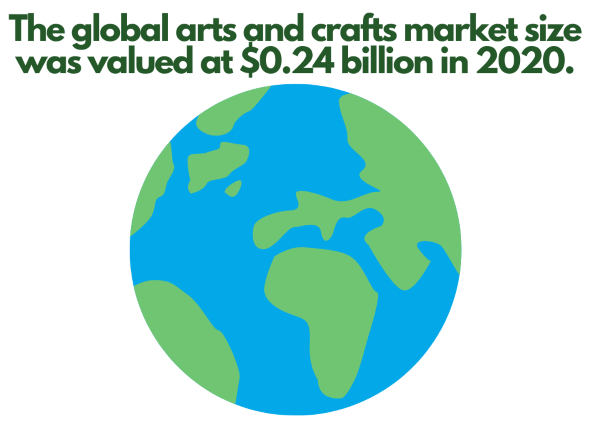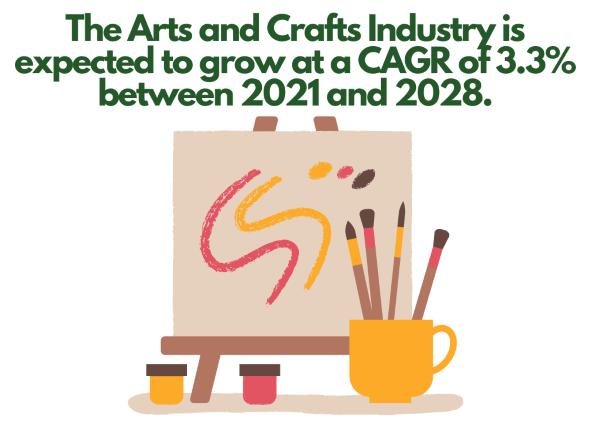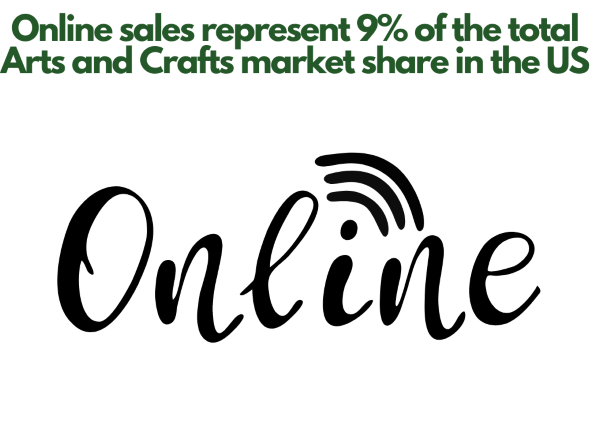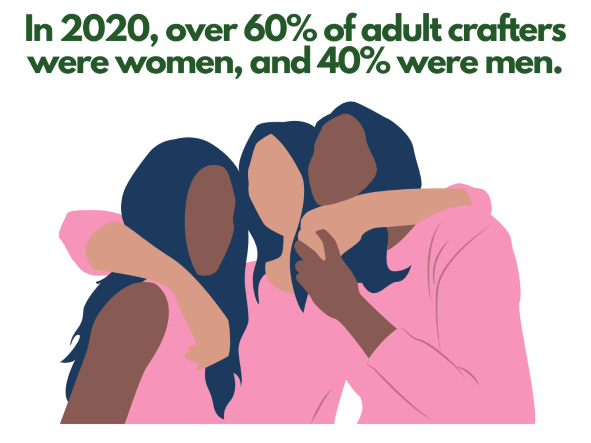How To Start A Craft Business
If you have skills in craft making or you wish to start selling crafts you will be looking at how to start a craft business. Perhaps you just have a real passion for craft and you would like to set up a craft business and be involved in logistics and not manufacturing, like working closely with a craft wholesaler or as a franchise. You might want to look into dropshipping opportunities where you don’t have to get involved in either logistics or manufacturing.
Whatever model you decide to set up there are lots of important steps when it comes to starting a business. In this article we go through the steps you need to take when you start a craft business.

Why Start a Craft Business?
If you love crafts, home decor, and the joy of creating something new then you might be considering starting up a craft business. Have you thought about the type of craft you wish to sell, or do you have some skill at making the craft bundles yourself? Do you wish to manufacture your range or dropship craft?
You will need to do lots of research to decide what type of craft products you would like to sell. You should arrange to visit stores that sell craft items and look into online stores. You might want to get some experience in the crafting industry to make sure it’s the right industry for you.
For many, having your own business is an exciting prospect. You’re in control of your marketing, and sales process and have a lot of options. You can set your own working hours and can make decisions yourself. If you’ve got a great idea to add to the craft market then it can be inspiring to be able to share your passion for home crafts and your fantastic idea with others.
You’ll need to keep researching the best strategies for running an eCommerce business so you can grow. Not every new start-up makes it, there are no guarantees so you need to be resilient and resourceful with a great brand and business acumen to give yourself the best chance of success.

Statistics for the Craft Industry
There are numerous statistics you need to know about starting a craft business. Here are some of the key statistics for you to know.
- Internationally, the arts and crafts market size was valued at $0.24 billion in 2020.
- The average DIY craft hobbyist will spend around $2,048 a year on creative supplies
- The niche is expected to grow at a rate of 3.3% between 2021 and 2028.
- Online sales represent 9% of the total sales in the US.
- In 2020, over 60% of adult hobbyists were women, and 40% were men.

How to Start a Craft Business
So what do you need to do to start a craft business? Take a look at the steps below to give you an idea of the process for setting up a craft business.
Step 1 - Choose Niche
First of all, you need to decide what makes your craft business special. Your USP is your unique selling point, this is what makes you stand out from other craft businesses. Perhaps you are planning to sell a particular brand of craft as a franchise. Perhaps you have a unique selling point like your craft supplies are suitable for children or designed more for adults. Perhaps they’re eco-friendly. Think about what makes your craft store special.

Step 2 – Choose a Business Name
Now you’ll need to choose a great name for your craft business. It will need to be unique. You will need to make sure the name you choose is original. You can use a craft business name generator to help you come up with some name ideas. You will need to check carefully that the name you choose is original. Check state business registers and do a business name search for the US states you wish to operate in to make sure the name isn’t already taken.
Make sure your name is available as a domain, domain checkers are free to use. You should also make sure your name isn’t a brand on social media and on marketplaces, not every business has a website!
Step 3 – Register Your Business
Register your business everywhere with state business registers, domains, social media, etc. You might need to register with suppliers, manufacturers or dropshippers, etc.
Step 4 – Build Website
Once you have registered your domain you can now get on with building your website. Your website is a great way to build awareness of your business like services and trust factors like social media links. You can write a blog using keywords to increase your reach online through SEO (search engine optimization). Squarespace, WordPress, and Wix are all great options for building a website and can be used by anyone without website experience.
Step 5 – Marketing

Now you can focus on marketing your business. You can use free keyword checkers online to make sure your text is optimized for search engine ranking. You can use traditional marketing methods like leaflets but this will be restricted to just your local area. Social media is a great way to reach a wider audience and share the news about your eCommerce store and the craft products you sell.
Final Word: How to Start a Craft Business
Learning hot to start a craft business is a really exciting business. You will have to come up with an original name, register it, market your business, and set up your business. Good luck with your new craft business!







